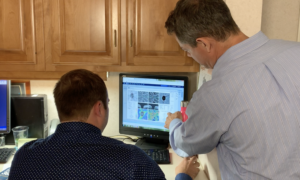
April 15, 2015
Medical eyecare that addresses age-related macular degeneration will be in ever greater demand, statistics cited by the National Eye Institute suggest: “By 2050, the estimated number of people with AMD is expected to more than double from 2.07 million to 5.44 million. White Americans will continue to account for the majority of cases. However, Hispanics will see the greatest rate of increase, with a nearly six-fold rise in the number of expected cases from 2010 to 2050.”
As we move deeper into implementation of the Affordable Care Act (ACA), there are patient care delivery models that we need to understand. If we are going to continue to deliver medical care to patients, we will need to work with these narrowed network models. Today, let’s tackle two of the patient care delivery models: Medical Homes and ACOs.
In 2007, the Patient-Centered Medical Home model was first proposed by four organizations: the American Academy of Family Physicians, American Academy of Pediatrics, American College of Physicians and American Osteopathic Association. The goal of this model is to create a closer relationship between the patient and the primary care physician (PCP). It does this by achieving better access, coordination of care, prevention, quality and safety within the primary care practice. A per member per month bonus is given to the PCP for improving primary care services. This is an example of one of the new provider payment schemes.
In Accountable Care Organizations (ACOs), many Medical Homes are working together. As you can see, ACOs are a larger model. ACOs are responsible for the cost and the quality of total patient care, not just the care delivered within one Medical Home. To control cost and quality of total patient care, ACOs by definition must include everything in the total patient care experience, from hospitals to PCPs to specialists.
How do we fit in as eyecare specialists? Being part of the medical team managing patients goes beyond just eyecare services. If a diabetic patient has been told by a PCP to stop eating sweet snacks, and this was reinforced by the endocrinology consult arranged by the PCP, all of this teamwork can be destroyed if the eyecare provider tells the patient “I like a sweet snack, too.” Do that enough times, and you will no longer be part of the medical team managing patients.
As a team member of Medical Homes and/or ACOs, it is our job to always be aware of the larger picture of trying to achieve better access, coordination of care, prevention, quality and safety, both within our own practices, and in the larger organizations that are delivering patient care.
Your task this week is to analyze your practice for access, coordination of care, prevention, quality and safety. Find ways to do these things better, so you will be attractive to both Medical Homes and ACOs.
Click HERE to read more about providing medical eyecare in the new environment created by the ACA.



























